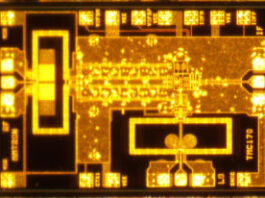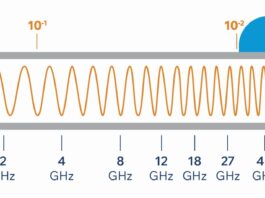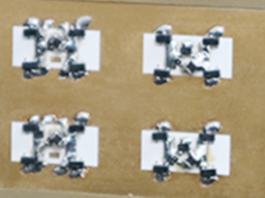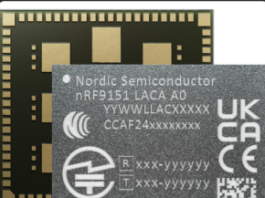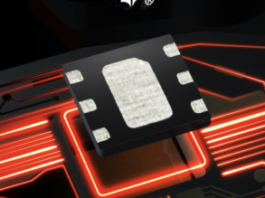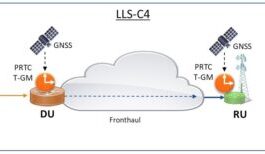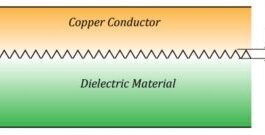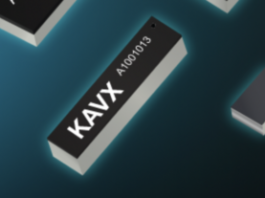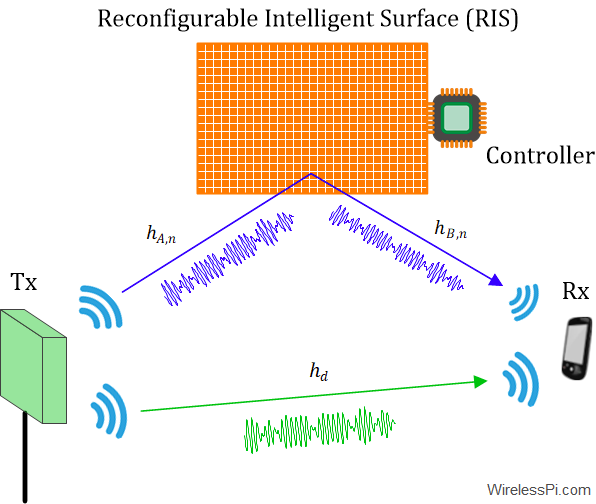
Metamaterial arrays allow the wireless medium and path to be “adjusted” to compensate for its many imperfections and changes.
In the never-ending quest to improve the end-to-end performance of a wireless link, nearly all the efforts have been focused on the transmitter side (encoding, forward error correction, power amplifier, antenna) as well as the complementary receiver side (antenna, low noise amplifier, receiver, decoding, error correction). The channel itself — the RF medium — has, however, generally been considered as an “as-is” or “given” element and not subject to improvement by the user.
Some wireless paths, frequencies, and settings are better than others, but the user can’t do anything to them once the usage decision is made. While in advanced designs, the transmit and receive sides can dynamically change their operating parameters to accommodate both slow and fast changes in the channel (attenuation, noise, distortion), the channel “is what it is.”
But that scenario may change. A relatively new technology called the reconfigurable intelligent surface (RIS) changes the channel itself to improve performance, increase signal-to-noise ratio (SNR), and reduce bit error rate (BER).
This qualitative, equation-free FAQ looks at what RIS is, why it is needed, why it is now increasingly feasible, and some of its downsides. Note that RIS technology is also known as a software-controlled metasurface or an intelligent reflecting surface.
Q: What is a RIS?
A: A RIS is a two-dimensional reflecting surface for RF energy composed of individual array elements. These can be dynamically reconfigured to change the parameters of the RF path. These changes result in time and phase-shifting, as well as changing angle of reflection. (Time shifting and phase shifting are two perspectives on the same underlying phenomena.)
Each element in the array is a discrete element with a controllable amplitude- and phase-response curve. A controller determines the specific settings for each element or group of elements. The scattering, absorption, reflection, and diffraction properties of the entire RIS can thereby be changed with time and controlled by software.
Q: Where is the RIS placed? Why do you want this placed in the channel?
A: The RIS array is placed in the media (channel) between the transmitter and receiver antennas and is not co-located with either but is in the channel space itself. You can envision it as a flexible mirror between the two ends of the link. RIS takes the signal on a slight path detour and adds a new controllable aspect to the paths, which can be used to complement and compensate for the uncontrollable propagation of the path. This intervening mirror can be dynamically tuned to improve the channel characteristics for improved system performance (Figure 1).

Figure 1. The controllable RIS is interposed in the medium between the source and receiver (Image: WirelessPi).
Q: Is RIS the same as a multiple-input multiple-output (MIMO) array?
A: No. MIMO enables beamforming in desired directions while simultaneously suppressing interference through spatial nulls. Once the MIMO antenna array “launches” the RF signal, the RF energy is at the mercy of the channel and its vagaries. While a MIM) array can be tuned to adapt to the channel’s issues such as a nearby interfering source, it cannot affect the channel characteristics.
Q: Why might RIS be better than MIMO?
A: Consider a 5G, MIMO-equipped cell tower in connecting to a smartphone. The MIMO beam can be steered to maintain light-of-sight direct contact with the phone. It cannot, however, account for changes in channel characteristics as the phone moves. In theory, a RIS system could work in conjunction with the MIMO link to compensate for detrimental channel changes. It could also “zero out” the Doppler shift that inherently accompanies motion between the source and the receiver (Figure 2).

Figure 2. User motion creates Doppler shifts, and the RIS-controllable channel can be configured to achieve zero Doppler-effect spread by synthesizing the movement of the RIS along a matching trajectory (Image: ArXiv).
Q: Why is RIS being evaluated?
A: Anytime you can do something to improve link performance, it is worth considering. An improvement of a few dB in SNR or even a modest reduction in BER merits investigation. At the same time, the presence of so many other RF sources and signals in a given band means that the stresses on system performance, including those induced by static and dynamic channel conditions, mean that every aspect of the link must be examined and, if possible, improved.
Q: Why is RIS now feasible?
A: There are several reasons why RIS is now possible. First, as operating frequencies move up into the multi-gigahertz range with wavelength in centimeters and millimeters, the size needed for the reflecting elements in the array becomes small enough to create one that has a manageable size and enough of these elements to be useful (such as 128 × 128).
Second, new technologies such as controllable MEMS structures allow the creation of tightly spaced, fully configurable array elements.
Also read: Cutting-Edge 5G Antenna Testing For Autonomous Vehicles In Existing EMC Chambers
Finally, there’s the availability of new material technologies such as metamaterials, with basic electromagnetic properties which can be electrically altered. Metasurfaces — which are two-dimensional surfaces of metamaterials —are already used in the design of numerous new devices and applications in the microwave, terahertz, and especially visible-light regions.
Q: What are some of the details of metamaterial construction for RIS applications?
A: These metasurfaces are artificial structures designed using very small (subwavelength) meta-atoms, typically arranged periodically or a-periodically in a plane. The refraction and reflection of electromagnetic waves at the interface of two media is governed by Snell’s law (named for Willobrord Snell, who discovered the law for optics in 1621). Snell’s law explains why a pencil in a cup of water appears bent at the air-water surface and why underwater fish are not really where you see them to be from above the surface). The law also explains why the angle of reflection equals the angle of incidence for an optical or RF signal bouncing off a reflecting surface.

Figure 3. A flat surface will reflect an incident plane wave in another direction, determined by Snell’s law, and the parallel incident rays remain parallel after reflection. In contrast, an RIS of the same physical dimensions can be configured to synthesize the shape of a different object (here, a parabolic reflector), thereby controlling the direction and shape of the reflected waveform (Image: ArXiv).
Snell’s law has been “upgraded” (but still remains valid) by restating it in terms of modern physics. Reflection or refraction occurs if there is a phase gradient at the metasurface of two homogeneous and isotropic media.
Q: What are the two general approaches to creating a metasurface?
A: Not surprisingly, here are digital and analog approaches with associated benefits and drawbacks (Figure 4). Digital RISs are implemented with MEMS and PIN diodes. Their advantages are their simple control circuitry and fast response; however, the phase quantization error introduced by digital phase-control devices can be excessive.

Figure 4. The a) digital and b) analog structure of the array element cell of a RIS metasurface shows their distinct differences (Image: MDPI).
Analog RISs use varactors (voltage-dependent diodes whose internal capacitance varies with respect to the applied reverse voltage, also called varicaps) to reduce the quantization loss due to phase shift because they enable continuous control of phase shift. This approach has the disadvantage of the loss characteristics of the varactor itself and the complexity of the associated control circuit.
Note that there are other ways to create and control metasurfaces and their individual elements, with many of them based on metamaterials and metasurfaces now routinely used for optical applications.
Q: Is the RIS and its performance amenable to modeling and simulation?
A: Absolutely, it is very compatible with the advanced and highly sophisticated, mathematically intense system and RF modeling, including analysis with complex equations of metasurface arrangements, channel assumptions, dynamic aspects, and more (see External References). It supplements the fixed or variable channel-media path (which is already extensively modeled) with a channel that also has an interposed and controllable element.
Q: What are some technical issues associated with the adoption of RIS?
A: There are several. First, the RIS has to be fabricated and compatible with the wavelengths and other specifics of the application. Second, the attributes of the RUS must be controlled in real-time, so there’s a need for continuous assessment of the channel performance, which is then fed back to the RIS control. This is a complex measurement, control, and optimization problem.
Q: What are the challenges encountered when adding RIS to a channel?
A: While the idea of RIS is attractive, its use in an actual system is still a difficult proposition. Among the concerns are:
- Is the benefit worth the cost and complexity of the hardware? What about the added complexity of the control algorithms and processing power needed? There is also the cost of basic operating power for the additional components.
- Developing the required channel-performance assessments from the transmit antenna to the receiving antenna is complicated yet must be done in real-time.
- How do the benefits outweigh a MIMO-based approach to improving channel performance?
- Components and systems for gigahertz-range signals are far more difficult to implement in practice than they are to do in theory. Tiny imperfections in the physical structure can have outsized negative effects, while unavailable aspects such as fringe-edging effects can degrade performance yet are very hard to model and accommodate in the models and algorithms.
The actual improvements may be modest, while the overall system cost may be high. It’s the ongoing design and engineering question, with an answer that depends on the application priorities and constraints: is the gain (benefit) worth the pain (the costs)?
Related EE World Content
Reconfigurable intelligent surfaces: Video interview with standards group chair
ETSI launches intelligent surfaces effort
Creating 5G massive MIMO: Part 1
Creating massive MIMO, part 2
Massive MIMO performance testing: Emulate the channel
Lasers, optics, electronics and more yield terahertz sources, Part 1 – Context
FAQ on fractal antennas, Part 1
FAQ on fractal antennas, Part 2
The Doppler effect: From highly ridiculed to absolutely indispensable, Part 1
The Doppler effect: From highly ridiculed to absolutely indispensable, Part 2
External References
MDPI, “Reviews Based on the Reconfigurable Intelligent Surface Technical Issues”
ArXiv, “Reconfigurable Intelligent Surfaces: A Signal Processing Perspective With Wireless Applications”
Wireless Pi, “Reconfigurable Intelligent Surfaces (RIS) – A Tutorial”

